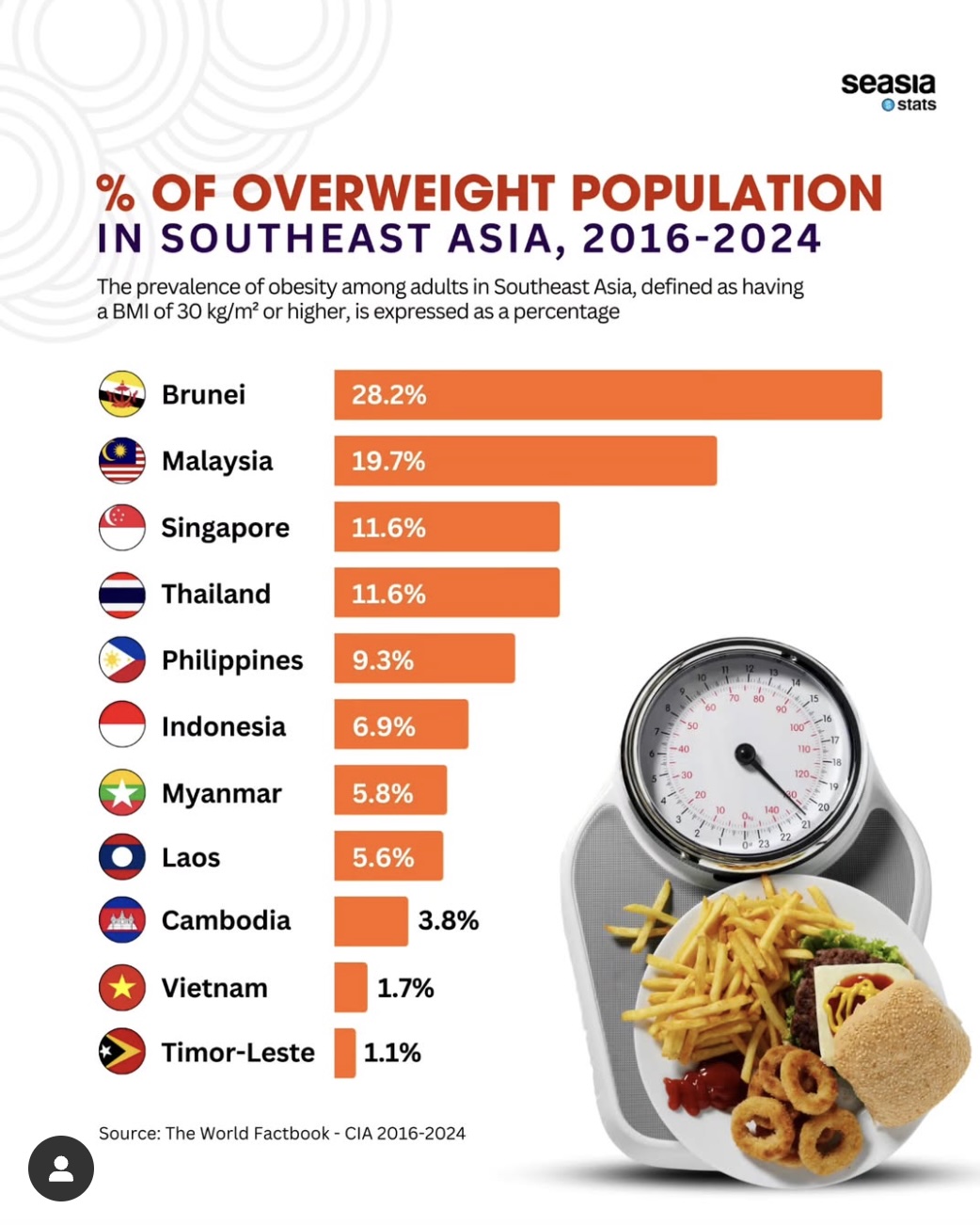SINGAPORE: A recent infographic published by Seasia Stats shows that among countries in Southeast Asia, Singapore has the third highest percentage of overweight population. Topping the list is Brunei (28.2 per cent), followed by Malaysia (19.7 per cent), with Singapore rounding out the top 3 (11.6 per cent).
However, the chart itself is somewhat confusing. While the top line says “% of overweight population,” the figures on it represent the “prevalence of obesity.”

There is a difference between the definitions of obese and overweight, as a person is deemed obese when they have a Body Mass Index (BMI) of over 30, while they are considered overweight when their BMI is over 25. According to an article in healthhub.sg, nearly 30 per cent of Singaporeans are overweight.
The Global Obesity Observatory’s latest data for Singapore shows that among adults, 13.1 per cent of men and 10.2 per cent of women are obese. Obesity has been on the rise in the city-state, from 8.7 per cent in 2017 to 10.5 per cent in 2019-2020 to the current 11.6 per cent. In contrast, in 2004, only 6.9 per cent of adults in Singapore were obese, and 18.7 per cent were overweight.
Nevertheless, Singapore’s numbers are still well below the global average of 15 per cent of obesity prevalence.
A 2023 article in the Singapore Medical Journal says that the rise in obesity prevalence in the city-state is largely due to economic and urban development and has come at the same time that diabetes has also reached an all-time high. The article expressed even more concern for Singaporean school-going youths from the ages of 6 to 18, among whom obesity rates rose to 16 per cent by 2021 from just 11 per cent in 2013.
The article also pointed out that Singapore has one of the most rapidly ageing populations globally and that ageing is associated with an increase in abdominal obesity.
“Together, ageing and obesity are twin engines that will drive multiple diseases and increase the risk of morbidity and mortality. The forecasted doubling of the prevalence of diabetes mellitus to 15 per cent between 1990 and 2050 is attributed largely to an anticipated ageing population and unchecked rise in obesity prevalence. The burden of obesity on our nation is profound,” it added.
In September last year, the World Health Organization sounded an alarm concerning rising levels of overweight and obesity in Southeast Asia, calling on countries to promote more physical activity and healthier diets. The WHO reported that around 5 million children under the age of 5, as well as 37.3 million youths from the ages of 5 to 19 in the region, are overweight. /TISG
Read also: NTU scientists discover potential obesity treatment using electro-acupuncture

